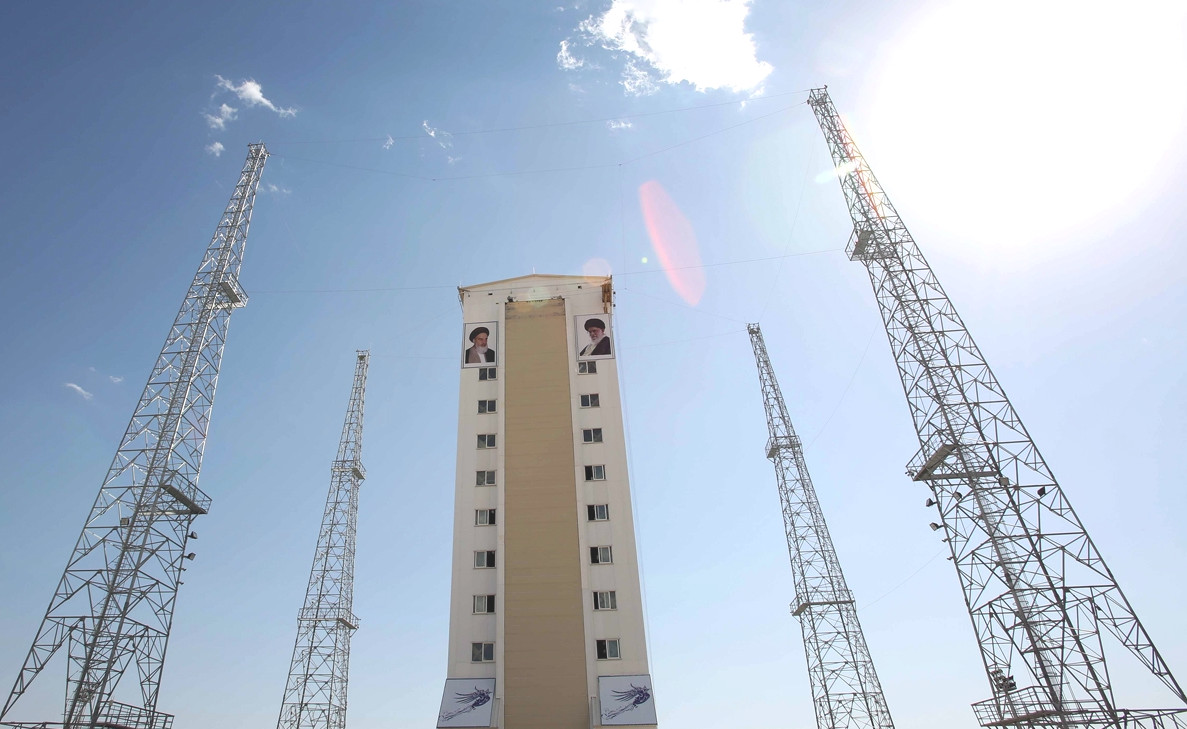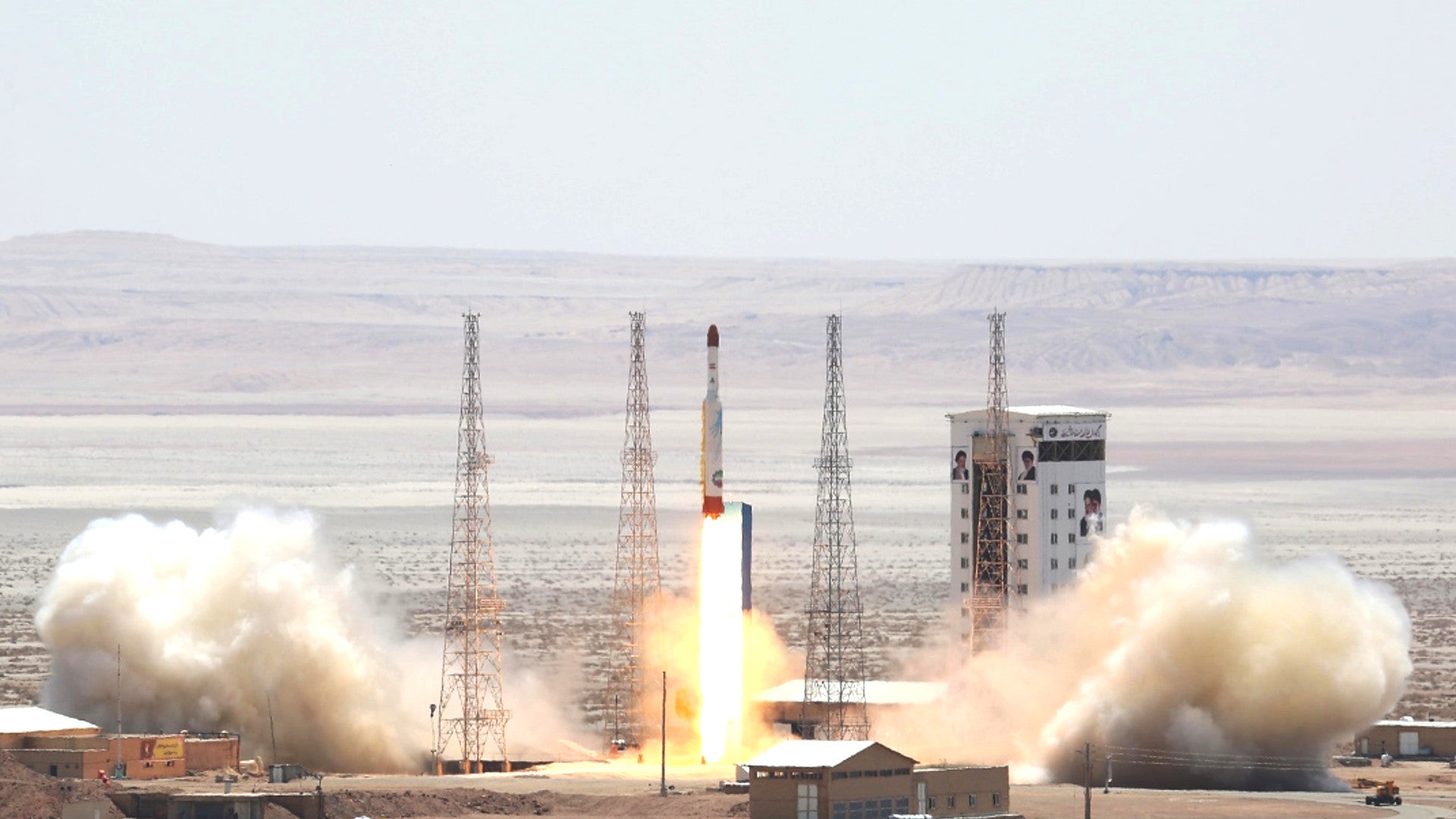Iran claims it has successfully launched a Simorgh rocket into space for the first time, possibly carrying an experimental intelligence satellite. A major achievement for the country’s space program, it is sure to provoke criticism from the United States and many of its allies, who see the project as a cover for research and development of an intercontinental ballistic missile (ICBM).
The Simorgh, meaning “phoenix,” lifted off from the Imam Khomeini Space Center, also known as the Semnan Space Center, in northern Iran, according to local media reports. The launch was reportedly successful, though there was no information immediately available about the payload or the rocket’s apogee.
The Tasnim News Agency said the rocket could carry payloads as heavy as 550 pounds to altitudes up to 310 miles, or Low Earth Orbit. The launch marked the official inauguration of the space center in Senman, according to the semi-official outlet.
Iran has been working on the Simorgh launch vehicle since at least 2010, when then-President Mahmoud Ahmadinejad revealed the plan publicly during a celebration marking the first anniversary of the country’s first successful satellite launch. That launch, which put a telecommunications satellite known as Omid, or “hope,” into orbit, involved a smaller rocket called Safir, or “ambassador.”

In parallel, Iranian authorities have been expanding the facilities at Senman to accommodate the Simorgh. Though officials claimed the larger rocket would be ready to go in 2010, it took more than five years for the first experimental launch to occur. The program missed another scheduled first launch in 2012. In the interim, Iran fired a number of other Safir types carrying earth imaging and navigation system satellites.
The United States and Russia both confirmed that there had been a ballistic missile launch on April 19, 2016, which experts believe was at least a partially failed test of the Simorgh. Iranian officials and local news outlets did not report on the event reinforcing the suggestion that it had not been entirely successful. Even if the rocket or its payload didn’t work as intended, it would have provided valuable data for continued development.

In December 2016, Iran did say it was planning on conducting another satellite launch before the end of the Iranian calendar year, or March 20, 2017, as well as two more before the end of March 2018. At the time, the country’s Minister of Information and Communications Technology, Dr. Mahmoud Vaezi, said that engineers had already built all three payloads.
One, Toloo, “sunrise,” was reportedly a remote sensing and signals intelligence platform. The other two designs would be for communications and scientific research purposes, respectively.
Having a multi-functional intelligence satellite would be one thing, able to grant Iranian military commanders and analysts an important boost in situation awareness, including over otherwise denied areas. At present, Iran forces or their proxies are actively engaged in conflicts in Syria and Yemen. Even a limited space-based capability would be an important learning experience that could aid future developments, too.

But more importantly, a successful Simorgh launch could put Iran one step closer to a viable intercontinental ballistic missile design. Though Iran has repeatedly denied these claims, the United States, Israel, and others view the entire project as a cover for a long-range missile that might be able to one day carry a nuclear warhead. A period review of global missile developments that the U.S. Air Force’s National Air and Space publicly released earlier in 2017, reiterated this position, saying Simorgh “could serve as a test bed for developing ICBM technologies,”
The Simorgh launch also comes less than a month after North Korea tested its own ICBM design, the Hwasong-14. Though there is no indication that the two countries’ designs are related, there is significant evidence that they have cooperated on missile developments in the past. There was already a concern that the North Korean test could inform similar Iranian developments.

Regardless, Iran’s ballistic missile development efforts are significant on their own. However, this research and development were notably absent from the multi-national negotiations that led to the 2015 Iran Deal, which instead focused solely on limiting the country’s controversial nuclear program. Still, American officials feel that repeated test launches are counter to the spirit of the final agreement.
So, already in 2017, the U.S. government has put two new sets of sanctions into place against individuals and entities connected to Iran’s ballistic missile programs. The Simorgh test could provoke a third round of diplomatic action over the issue.
In response, Iran has said it will not bow to sanctions or other threats and has vowed to continue with its missile work. In June 2017, its Islamic Revolutionary Guard Corps fired six Zulfiqar short-range ballistic missiles at targets in Deir Ez-Zor, Syria, underscoring the country’s capabilities. Ostensibly a strike on ISIS terrorists in response to a pair of unprecedented attacks in Tehran, the decision to use the missiles appeared to serve other purposes, as well.

At the time, The War Zone’s Tyler Rogoway wrote:
Iran’s use of ballistic missiles accomplished two clear objectives. First it offered at least some sign that Iran was exacting vengeance for the rare terror attack on their parliament. This is a much needed event for Iran’s ruling elite, and it will play well for domestic consumption. So the attack is largely a hollow political gesture more than a tactical one. Second, it showed the world Iran’s missiles are not just an experiment or a propaganda tool, but that they are very real capability to be reckoned with, and Tehran is now apparently willing to use them.
Iran’s developments have long sent a message to other countries in the region, such as Israel, Saudi Arabia, and the United Arab Emirates, all of whom are already hard at work expanding their ballistic missile defenses. As more information emerges about the Simorgh launch, it might add even more urgency to those projects.
As for the launch itself, its undoubtedly a milestone for both Iran’s space and missile programs and an indicator that the country is getting closer to an ICBM-like capability.
Contact the author: joe@thedrive.com
